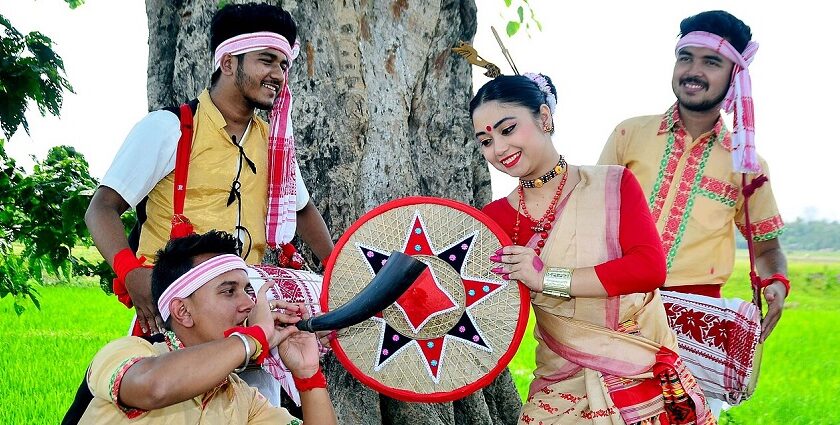Festivals in North East India beautifully showcase the region’s cultural diversity, blending music, dance, and traditional rituals. From harvest celebrations to spiritual gatherings, each state adds its unique flavour, creating a lively atmosphere for both locals and travellers. These vibrant occasions are not just about joy and entertainment but also offer a glimpse into age-old customs and warm hospitality. Attending them allows you to witness the raw essence of the land while experiencing unforgettable traditions, colourful performances, and the true spirit of community celebrations.
Top 10 Festivals In North East India
Taste the special foods and experience the culture of this region with these famous festivals of North East India.
1. Bihu Festival
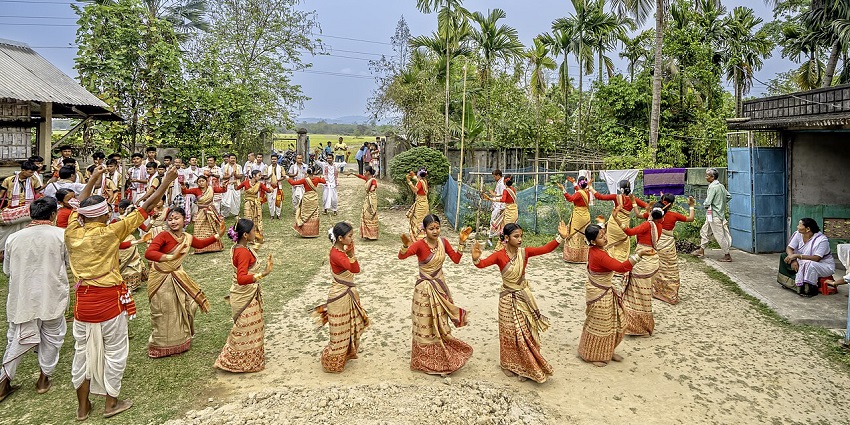
Photo: Donvikro / Wikimedia Commons
Bihu is the heartbeat of Assam and one of the most spirited celebrations in the North East. It is actually three different festivals spread across the year: Rongali, Kongali, and Bhogali Bihu. The Assamese New Year and the planting season start in April with Rongali Bihu. Families come together, wear traditional clothes and join in Bihu dances performed in open fields and community grounds. The festival is also marked by melodious songs, rhythmic dhol beats, and vibrant markets selling everything from handwoven gamosas to delicious pithas. Kongali Bihu, celebrated in October, is quieter and tied to the stage when crops are growing.
Location: Across Assam, especially Guwahati and villages
Major Highlights: Bihu dances, folk songs, dhol beats, local markets, feasts
Suggested Read: Discover The Vibrant Harvest Festival Of Assam On Your Next Journey
2. Hornbill Festival
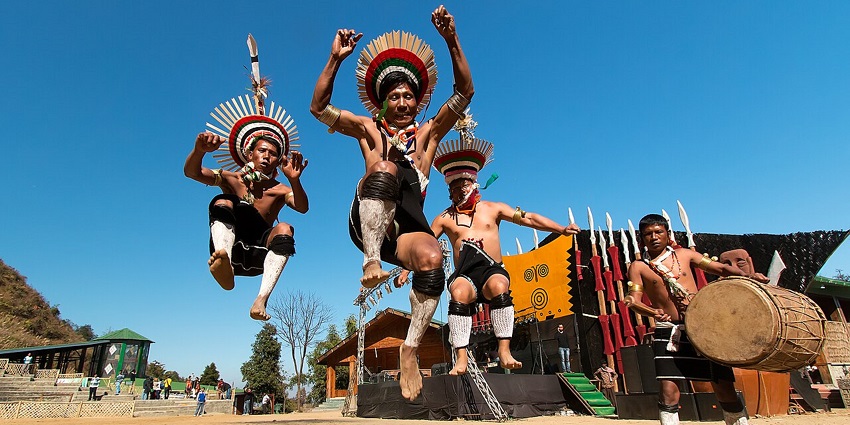
Photo: Vikramjit Kakati / Wikimedia Commons
Hornbill Festival in Nagaland is also called the “Festival of Festivals” because it gathers all the major tribes of the state into one grand event. It takes place every December at Kisama Heritage Village, just outside Kohima. The festival brings together traditional music, folk dances, crafts, and food from every Naga tribe. You can watch tribal warriors perform age-old dances, attend wrestling matches, and taste smoked pork or bamboo shoot curries. Moreover, the festival also promotes contemporary culture with rock concerts, fashion shows and art exhibitions. For travellers, it is the perfect chance to experience centuries-old customs within a single setting without having to visit each tribe’s village separately.
Location: Kisama Heritage Village, Kohima
Major Highlights: Tribal dances, folk music, wrestling, crafts, rock shows, Naga cuisine
3. Sangai Festival
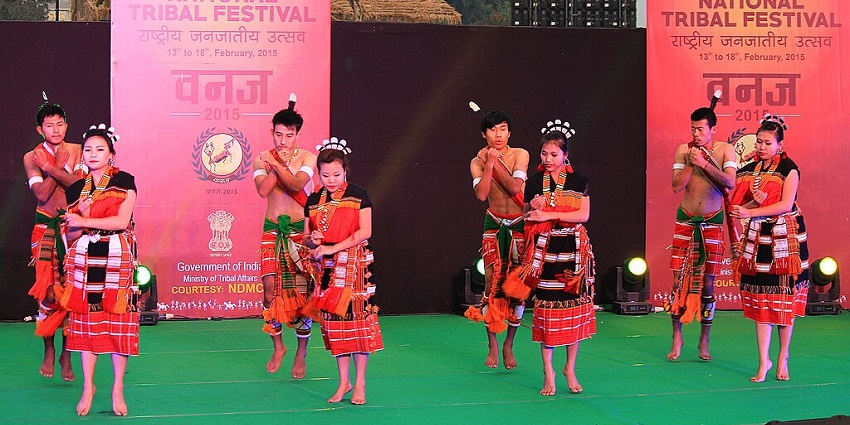
Photo: Sumita Roy Dutta / Wikimedia Commons
The Sangai Festival is Manipur’s most celebrated cultural event, held every November with great enthusiasm across the state. Named after the rare and endangered Sangai deer that lives only in the floating meadows of Keibul Lamjao National Park, the festival beautifully combines culture with conservation. Visitors can experience Manipuri dances like Ras Leela, Pung Cholom drumming, and Thang-Ta fighting arts. Local craft persons also display stalls of handicrafts and handlooms, while food stalls offer mouth-watering ethnic delicacies like eromba, singju, and chamthong. Apart from the various performances, the event includes adventure sports, exhibitions on flowers as well as eco-tourism activities.
Location: Imphal & Keibul Lamjao National Park
Major Highlights: Ras Leela dance, Pung Cholom, martial arts, crafts, Manipuri cuisine
Suggested Read: The Tunes Of Hornbill Music Festival
4. Losar Festival
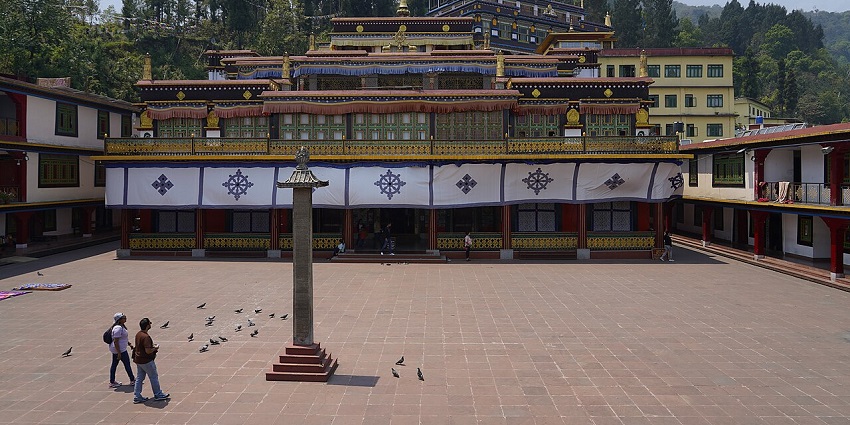
Photo: Amitabha Gupta / Wikimedia Commons
Losar, the Tibetan New Year, is a joyful celebration observed by the Monpa tribe in Arunachal Pradesh, especially in Tawang and West Kameng. It usually falls in February or March and lasts up to fifteen days, making it one of the longest and most elaborate festivals in the region. The festivals welcome the end of winter and the onset of spring. Monasteries are colorfully adorned with bright flags and lamps, and there are rituals performed by monks to ward off evil spirits. The families converge when preparing the traditional thukpa and momos, while the guests are offered the rice beer.
Location: Tawang & West Kameng
Major Highlights: Tibetan rituals, prayer flags, folk songs, thukpa, momos, rice beer
5. Ambubachi Mela
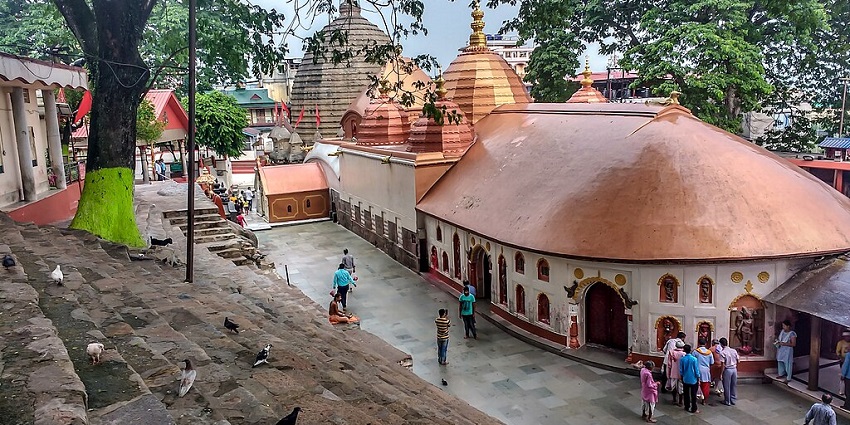
Photo: SurajJC / Wikimedia Commons
Ambubachi Mela, held at the Kamakhya Temple in Guwahati, is one of the most unusual religious gatherings in India. It takes place every June and marks the annual menstruation of Goddess Kamakhya, symbolising fertility and womanhood. Thousands of worshippers gather outside the temple during the three days it is closed to pray and perform rituals. The temple opens again on the fourth day and pilgrims go there to get blessings. The mela draws saints, ascetics, and sadhus from all over the country, making it a lively and colorful event. Beyond devotion, the mela includes fairs where local crafts and food stalls create a festive atmosphere.
Location: Kamakhya Temple, Guwahati
Major Highlights: Religious rituals, sadhus gathering, crafts fair, devotional songs
Suggested Read: Dimapur Music Festival
6. Moatsu Festival
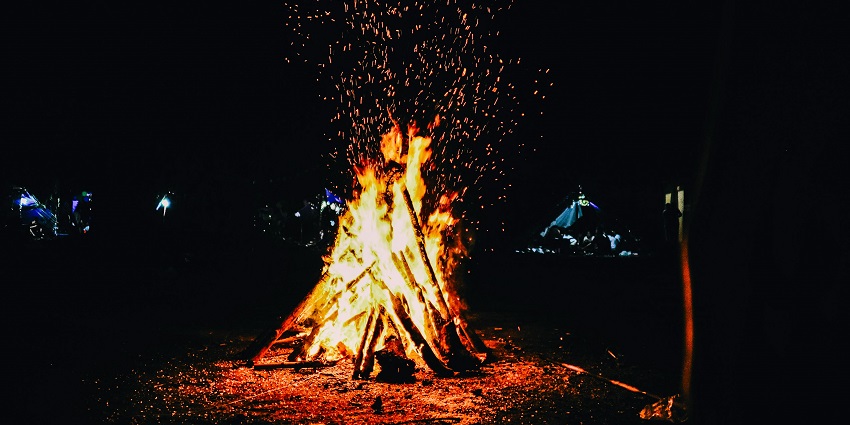
Photo: Min An / Pexels / Image For Representation Only
The Ao tribe of Nagaland celebrates the Moatsu Festival in May, which marks the end of planting seeds. People within the community come together to celebrate with bonfires, songs, and dancing. The individuals perform rituals as they pray and ensure the upcoming year will be well. The event is also the time when people get familiar with other people. Villagers welcome guests with open arms and share rice beer and traditional foods. Men and women wear bright tribal clothes, and folk songs and laughter fill the air. Bonfire parties often last late into the night, making them a fun and exciting time.
Location: Mokokchung district
Major Highlights: Bonfires, Ao tribal dances, rice beer, traditional foods, storytelling
7. Wangala Festival
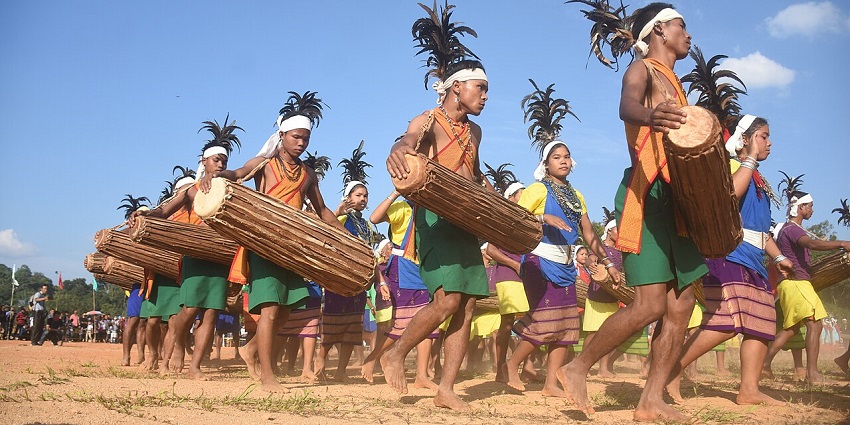
Photo: Visma Kumar / Wikimedia Commons
The Wangala Festival, often called the Hundred Drums Festival, is the most important harvest celebration of the Garo tribe in Meghalaya. It usually takes place in November to honour the Sun God, known as Misi Saljong, who blesses the people with a good harvest. The atmosphere during Wangala is full of life, with hundreds of drummers and dancers filling the air with rhythm and energy. Men beat large drums while women move gracefully in synchronised steps, wearing colourful attire decorated with beads and feathers. The rituals start with a ceremony led by the Nokma, or village chief and gradually move to the joyous performances.
Location: Garo Hills
Major Highlights: Hundred drums, dances for Sun God, tribal attire, village rituals.
Suggested Read: Harvest Festival Of Nagaland
8. Myoko Festival
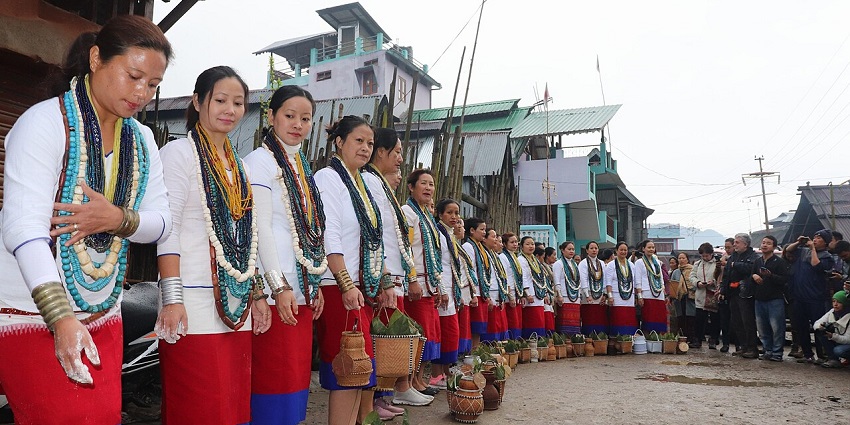
Photo: The Hagez / Wikimedia Commons
The Apatani tribe in Ziro Valley, Arunachal Pradesh, celebrates the Myoko Festival in March. It is one of the region’s most important agricultural festivals, and it stands for unity, fertility, and prosperity. During the festival, village priests perform rituals in which people chant, make offerings and even sacrifice animals to ask for blessings from the gods. During the celebrations, people go to each other’s homes, which brings the community closer together. There is a lot of rice beer and guests are served traditional meals. There are also cultural dances and chants at the festival that make the rituals more lively and rhythmic.
Location: Ziro Valley
Major Highlights: Rituals, feasts, rice beer, Apatani tribal dances
9. Chapchar Kut
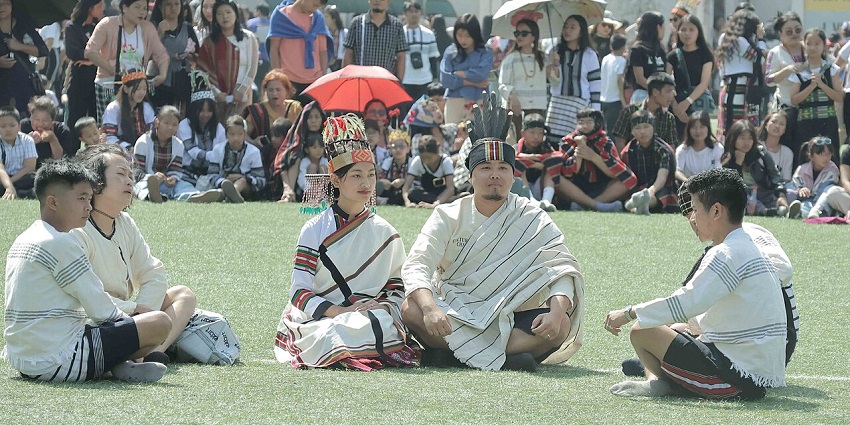
Photo: DavidOfThe / Wikimedia Commons
Chapchar Kut is the most loved festival in Mizoram and is celebrated with immense joy in March after the completion of jhum cultivation. It is when people take a break from their agricultural activities to rejoice together. The festival is marked by traditional dances, folk songs, and feasting. The Cheraw dance, also popularly known as the bamboo dance, is the main highlight. Dancers move gracefully between bamboo poles that are tapped rhythmically. Locals wear colourful traditional attire, and special dishes along with rice beer are prepared for the occasion. The celebration also comprises games, cultural programs, and community interaction.
Location: Aizawl & across Mizoram
Major Highlights: Bamboo dance, folk songs, tribal dress, feasting, cultural games
Suggested Read: Harvest Festivals Of Sikkim
10. Anthurium Festival
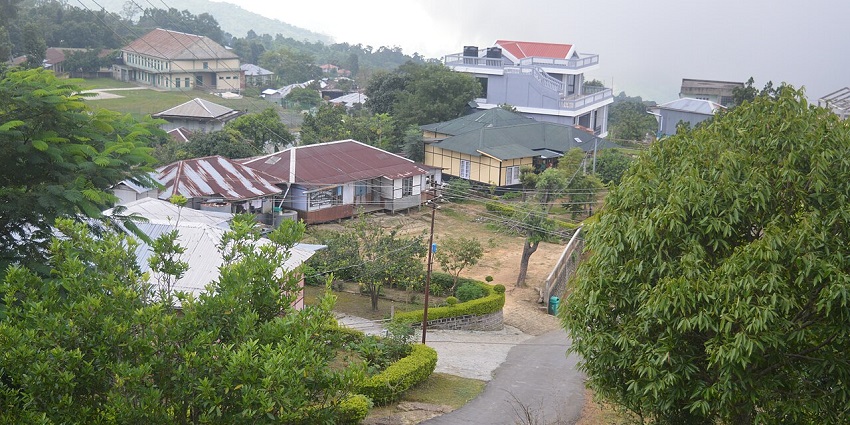
Photo: Bodhisattwa / Wikimedia Commons / Image For Representation Only
When it comes to Mizoram, the Anthurium Festival is a one-of-a-kind mix of cultural celebration and tourism marketing. The event takes place every September in the charming village of Reiek and shows off the stunning beauty of the anthurium flowers that grow in the area. There will be flower displays, traditional dances, fashion shows, music, and food stands at the event. People who come can also buy handloom goods and crafts made by local artists. Ecotourism in Mizoram is one of the goals of the fair, which is also a fun event. The event takes place in a beautiful place surrounded by lush green hills.
Location: Reiek village
Major Highlights: Anthurium flower displays, cultural dances, fashion shows, food stalls
Festivals in North East India are living traditions that connect people with their culture and land. From the lively Bihu in Assam to the soulful Wangala in Meghalaya, each state offers something unique. Beyond performances, these celebrations share stories, beliefs, and values, while treating you to local food, music, and warm hospitality. Plan your visit with TripXL and experience a vibrant journey of colours, sounds, and traditions.
Cover Photo: Diganta Talukdar / Wikimedia Commons


 WhatsApp
WhatsApp
 Twitter
Twitter
